N: This is your third ChoreoFest but the first as choreographer. What are you most nervous about regarding this year's ChoreoFest? AC: I'm always pretty anxious about setting my work on other people. When I'm the one performing, when I'm inside my own work, I'm not nearly as self concious about how the movement and ideas read. When I'm putting on the director's hat, I get so much more critical of my ideas. I'm definitely nervous that I'll trip myself up. N: What's your favorite memory of a previous ChoreoFest? AC: Oh my gosh that moment when the yarn ball hit Sam in the head during dress rehearsal my first year. It was too perfect. There was no way to reproduce it, so we sort of accepted it as a one time perfect moment. N: ChoreoFest is a controlled situation to create work in in terms of time and topic. What the first thing you hope to do once you get your dancers in the studio? AC: Get comfortable. Really though, I'm going to be focusing on getting everyone comfortable with each other and with me. The parameters of the festival make it so that the more comfortable we are and the more trust we have in each other, the faster we can get things done.
N: Karen Krolak will be on hand as "choreographic guru" for the entire festival. How have you incorporated outside voices/mentoring in the creation of new work in the past? What's a question you often have about your work for someone outside of the creation process?
AC: Karen has given me constant feedback in the time we've been working together, but coming off the Pilobolus workshop I think the thing I'm going to ask the most is "What do you see?" In the past I've been very precious with my work, and I'm hoping Pilobolus has broken me of the habit. I want to ask about the moments that stand out and and build on them, and it will be interesting to see whether what I think is interesting and what Karen thinks is interesting matches up or diverges. N: If you could pick any performer from any time to set a piece on who would it be and why? AC: I'm reinterpreting this question because what I actually want is for Martha Graham to set a piece on Pilobolus (any iteration, really, they're all pretty spectacular). Her dancing has such an intensely sculptural element; even though they're vastly different schools I feel like they would have made amazing choreography together. So I guess I'm saying I want to set a piece on Pilobolus, but as Martha Graham. #lifegoals N: Who are your mentors? AC: Karen Krolak and Nicole Harris have been such driving forces in my life, I don't think I would ever have done ChoreoFest as a choreographer if they hadn't asked. To be fair, Karen and Nicole are less "you can do this" coaches than "can you do this by friday" coaches. They know you can do it, or they wouldn't ask. N: What's something that you feel you learned from them that you want to pass on to people you mentor? AC: Perfection is boring. If your choices are perfect or unique, pick unique. There are no mistakes. They're usually the best part of a dance. N: Where can people learn more about you and your work? AC: Monkeyhouse can be found on Facebook, Instagram and Twitter as well as here at MonkeyhouseLovesMe.com. I can be found on Instagram and Twitter as well as on my Dance Every Day YouTube channel!
1 Comment
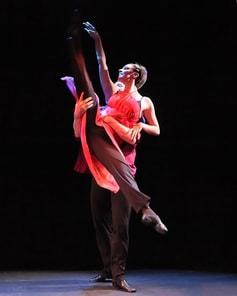 Darrah Carr Dance Company- Laura Neese, Timmy Kochka photo by Erin Baiano Darrah Carr Dance Company- Laura Neese, Timmy Kochka photo by Erin Baiano In celebration of Laura Neese's birthday here's the interview we did with her back in 2014 I have met some incredibly interesting people in the process of these interviews and Laura Neese doesn't disappoint! You can catch her work at the CoolNY 2014 Dance Festival on Friday, February 7th at 9:00pm & Sunday, February 9th at 6:00pm. All performances are held at the WHITE WAVE John Ryan Theatre, 25 Jay St., Brooklyn, NY and are FREE! -Nicole N: The piece you'll be performing at the CoolNY Dance Festival involves "shoe-less" tap dancing combined with modern vocabulary. As both a modern and tap dancer myself I am always excited to see work that combines the two! I also saw that you have a background in Irish dance. Can you talk a little about ways you work to combine these backgrounds as you create new pieces? LN: I find something inherently individually expressive about tap/percussive improvisation. If you ask me to just dance, I’ll spiral my torso and explore spine articulation like a good modern dancer, but my feet will probably start a nonmetred, illegitimate, un-time step… (something to do with the mixed up tap and Irish dance history in my training, and the natural inclination of people to tap their feet to music..) I’ve noticed in processes and improvisations, (& on the ferry) that my feet really want to speak up. For this new work, I wanted to listen and explore this impulse as a part of my creative work. Though it reads differently than the emotionality of shape, audio imagery – the mathematical logic or illogic of rhythm, spontaneity, and the way that reverberates in the body – I think can create an experience just as rich with feeling. Right now I’m experimenting to see how I can incorporate this part of me into my work. My work with Darrah Carr Dance, and guest choreographer Sean Curran, has also been influential in opening me up to the possibility of combining elements of dance forms. Darrah’s work combines traditional Irish and contemporary modern dance, and Curran’s work for the company is always imbued with strong rhythmic sensibility.
We met at Dance New Amsterdam, actually. Without having previously known each other well, we started to make a dance -just to make one- which led to more dances, which snowballed into a regularly meeting company or “collective,” and bringing other dancers in along the way. It has been a remarkable baptism by fire. We all contribute our resources and talents to make it possible to offer each other not only consistent involvement in a rehearsal process as a performer, but also the opportunity to explore choreographic ideas with a company of supportive bodies. We pass the choreographic baton in rotation, and capitalize on our individual skills to keep the organization going- hence our nifty titles… though we each may do a little bit of everything. Claire (our “master schedule machine,” and an arts administrator in her other life) is one of the most detail-oriented people I’ve ever met; Joanna (“mathematician,” our financial manager) has a gift for data and numbers – and a math degree. Katie (“body whisperer”) is a Pilates instructor with remarkable knowledge of the body and intelligent recommendations for various dancerly ailments- a gem in rehearsal. As “wordsmith” I write and edit text for company use… I’m somewhat fastidious about apostrophes. I’m very grateful for the opportunity to work with these remarkable women and for their having fallen into my life, (or I into theirs?) 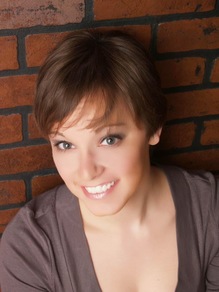 photo by Laura Neese photo by Laura Neese N: We had a very brief conversation about the insular-ness of many dance communities. While struggling to acquire very limited resources it's easy to take on a "me against the world" attitude. What are some ways that you have tried to fight against that mentality for yourself and those around you? What do you see as the benefits of creating a broader, more communicative and sharing dance community? LN: KitchenSink definitely helps ameliorate some of the “me against the world” feelings… though as an outer borough dwelling artist (of that obscure, “pretentious,” modern dance kind of art) the issue can become quite pernicious. However even in Staten Island, the borough most underserved in arts education and venues, I have found a resilient though somewhat fragmented arts community. Knocking on doors, finding out about and participating in creative events (especially those that bleed outside of your own discipline) I have found to be invaluable in a) meeting new, interesting people, with new, interesting perspectives, b) leading to new opportunities, c) finding people really do appreciate your strange art form if they have a reason and chance to see it. d) new reasons to share what you do with other people and to help people share what they do…. And it keeps going. Diving into explorations of other arts- taking workshops in different things- helps me to recognize the continuity of the creative process across mediums, recognize strengths and weaknesses of different modes of working, and to remember to not take myself too seriously (though to take the craft seriously). Some of my most interesting dance related experiences as a performer, choreographer, and otherwise creative conspirator have occurred in non-traditional dance settings: collaborating with musicians, filmmakers, theatre practitioners, photographers, and “normal” community members. I believe it is important to not only keep dialogues going within the dance community, but also to extend the invitation beyond the dance regulars. Face it, we get esoteric, we get stuffy, we get into patterns of what is “in” and “isn’t.” We get stuck in ruts. And we get frustrated when no one shows up. If we individually want to improve our art making – and stay interested & interesting - I believe it is vital to experience many other kinds of art as a spectator or participant. (Maybe art is painting, or storytelling, or a craft, or acting, teaching, computer programming?) If we, individually, invite other people who would or could be interested in dance -if they were exposed to it- into the conversation, would the field not be richer indeed?
Now as an educator myself I function as a mentor at times for specific dance students, (and academic tutees). For these individuals, I usually find myself acting as a confidence coach. Whether they are performing on stage or on an exam I recognize that students need to find the desire and determination within themselves to put in the necessary work, and then trust their own abilities to do it. This sort of consistent engagement with students is a reminder to appreciate process in general.
1. Being in the work prevented me from seeing the overall piece, its structure, spatial
design, cohesiveness….and also from being able to give dancers prompts / feedback for nuanced performance. 2. I sadly realized that although I had a powerful performance presence, my little body had too many anatomical limitations to achieve the look I wanted. I would focus so hard on extensions and pointed feet, thinking I had really done well, and then I would see myself on video and cringe. This is still emotional and deeply personal for me to discuss; in fact, I’m not sure I should be disclosing this fact as I don’t want it plastered all over the web. I chose to work with dancers who had the technical capacity and performance aesthetic that I wanted for my works. NH: What are you most nervous about regarding ChoreoFest? NL: Well, I suppose keeping tensions down as we all become more sleep deprived, especially since I am working with some of my dancers for the first time, and this group is definitely working together for the first time. So I am unfamiliar with their personal triggers and preferred learning styles. Working with new people in a new group is always challenging for optimal communication, and this setting adds much deeper challenges due to its nature. Keeping calm and gentle communication open is key to a successful and enjoyable experience for all. On a humorous but very real note: I am concerned about bringing too much stuff and the horrors of trying to get all the stuff from my little Mazda into The Dance Complex on a traffic filled Friday evening. I’m one of those people who thinks it best to bring something “just in case” rather than to be caught without. NH: Since this is a very controlled creative space (in terms of time and topic) where do you see yourself starting when you get in the space? NL: I will most likely start with some guided improvisation to help all of us get more comfortable with each other. Depending on the topic, I may ask the dancers to engage in a written exploration as a means of movement generation. Writing or no writing, unless I have an extremely strong personal connection to the theme, I would like the initial movement generation to come from each of the dancers. We tend to better remember and most fully execute that movement which naturally emanates from within our own bodies. NH: In creating a new work, what is the relationship between you and your dancers? Do they participate in the creative process? If so, how? NL: Please refer to the information provided in response to the previous question. Additionally, I like to verbally engage with the dancers as to their thoughts and valuable insights about the creation of meaning in the work. Often I will ask the dancers what feels most comfortable or natural when finessing the details of the movement. NH: Knowing that Karen Krolak will be on hand as "choreographic guru", what things do you hope she can help with in the overnight process? NL: Probably technological assistance with computer audio editing. I have a new laptop that I really don’t know how to use with its Windows 8 platform (grrr), and an old laptop that (at best) functions at the speed of a snail trying to get up a molasses covered hill in winter. NH: Who are some of your favorite choreographers? NL: Oh boy…Alvin Ailey, George Balanchine, Mark Morris, Alonzo King, Jill Bahr, Dwight Rhoden, Desmond Richardson, Bill T. Jones, Ulysses S. Dove… is that enough? NH: Who are your mentors? How are you paying forward the things your mentor gave you? NL: Oh my god, I could go on forever here…but first and foremost I must honor the memory of my recently departed mentor and colleague, Dr. Jan Van Dyke of Greensboro, NC. I can’t believe she is gone. She is being honored with a memorial this coming Sunday August 22nd, held at the UNCG Dance Theatre and livestreamed on the web. I can’t say enough about or adequately summarize how much I learned from Jan as a teacher, choreographer, administrator, and woman of dignity in the arts and academe. Last week I was teaching young student choreographers during an intensive at The Dance Academy in Fall River. I gave them the same first day lesson that Jan used in Choreography II, The Craft at UNCG, for which I was twice her TA. We wrote rhythms on the board and discussed time values of different musical notes, and how many beats per measure, and how to vary rhythm and apply it to movement to create new and interesting variations. It’s actually a very difficult concept to grasp for most of us, but invariably successful in the end. The school director was impressed when she saw the material and commented that they were learning so much from me. I told her that it was all Jan, or JVD as we lovingly called her.
Eu me apaixonei quando conheci a Heather. Sua doçura, sua humildade e o jeito com que ela ensina sapateado e música me inspiraram para realizar um curso intensivo de verão em NY. Dois meses antes de viajar, decidi vender meu carro e me mudar para os EUA. E desde então, estou aqui. N: Você cresceu estudando outras modalidades de dança além do sapateado americano. Você continua fazendo essas outras aulas? Você sente que ter estudado outros estilos de dança colaborou com seu sapateado? FG: Eu cresci vendo e dançando samba como a maioria dos brasileiros. Estudei jazz, sapateado, ballet e contemporâneo. Nunca fui um grande bailarino, mas a dança me ajudou a desenvolver habilidades básicas, como os giros e o equilíbrio. Além disso, me ajudou a considerar meu corpo como um todo no sapateado, e não só os pés. N: Recentemente, você me contou a história sobre o seu primeiro par de sapatos e sua primeira aula de sapateado. Você pode dividir essa história com a gente? FG: Claro! Quando eu tinha 14 anos ganhei um dinheiro de presente de aniversário da minha família e decidi comprar meu primeiro sapato. Eu "praticava" em casa e até fiz uma performance na escola, mesmo sem nunca ter feito uma aula. Então, quando eu tinha quinze anos, finalmente encontrei uma escola de dança que tinha sapateado na grade. Eu me lembro que não era muito barato, mas meus pais apoiaram a minha vontade. Quando cheguei na aula a professora me perguntou se eu já havia sapateado antes. Eu disse que sim, e ela me pediu se eu poderia mostrar meu passo favorito. Fiz um estilo único de dança, que até hoje não me lembro o que foi, mas sapateei (risos). Anos depois ela me lembrou deste fato e rimos muito. Seu nome é Valeria Petroni, e ela foi uma excelente professora nos meus primeiros anos de sapateado. Sou muito grato por ter aprendido tanto com ela.
Honestamente, meu inglês ainda não é perfeito, e ainda tenho que aprender bastante. Por exemplo, na aula de hoje, a única maneira que encontrei para explicar o que queria foi dizendo: “Imagine você usando uma fralda”. Depois, eu afirmei: “Hora de colocar a fralda!”. E, claro, no final da aula, eu lembrei: “Não esqueça de trazer sua fralda na próxima aula”. É divertido!
BDT: We are keenly aware that we will be working within a creative space that is controlled by both time and subject matter. Our areas of concern are A) the structure of the choreographic process itself and B) time management. Our work incorporates many artistic mediums (dance, text work, writing, and multimedia), which would normally be layered into a performance piece one by one at comfortable pace. What would normally be a multi day process will now be shaved down to a multi hour process. N: Since this is a very controlled creative space (in terms of time and topic) where do you see yourself starting when you get in the space? BDT: After we pull our prompt we plan to discuss thematic material as a group, using the ideas generated to put everyone to task. The company will then be divided into subgroups of writers, dancers and technicians to begin gathering kernels of material that will provide the foundation of the performance piece.
N: Karen Krolak will be on hand as "choreographic guru" for the entire festival. How have you incorporated outside voices/mentoring in the creation of new work in the past? What's a question you often have about your work for someone outside of the creation process? BDT: We love and respect outside voices! Having a different individual with an informed set of eyes reviewing your work is critical to the process and success of a piece. Typically, we like to receive “blind feedback,” meaning that anyone viewing our rehearsal process for the first time will not be given much, if any, direct information regarding our vision for the piece. This gives the opportunity to truly see the work without pretense, allowing us to find out where we have clear moments, distortion, other potential avenues to utilize, etc…Only after feedback has been given will we divulge our intention for the piece. N: Who are some of your favorite choreographers? BDT: Top 6: Twyla Tharp, Mark Morris, Bob Fosse, Alvin Ailey, Paula Josa-Jones, Bill T. Jones, Dada Masilo, Lamine Thiam. Ok, we lied…that’s a top 8…and Pilobolus has to be thrown in just for fun!
BDT: Jenn: Alvin Ailey because I admire the strength, grace, athleticism and incredible storytelling experience of this company.
N: Who are your mentors? How are you paying forward the things your mentor gave you? BDT: Jenn: Chuck Brown, Janet Taisy-Craft, Robb Fessler, KJ Hubner, Carolyn Jepsen, Craig North Carolyn: Laurel Browne, Wendy Dwyer, Doug Ingalls, Peggy-Rae Johnson, Bob Lawson, Jenn Webb The people in each of these lists have many common threads connecting them to one another. The overarching theme that we keep returning to as we discuss their work and influence is “Let your passions overwhelm your fears.” We’ve inherited an element of bravery and grit that directly informs our work as performers and teaching artists, and we pass this on to anyone who works with us. Over the years we have been given many lenses to work with, resulting in a fierce passion for the body stories that are capable of scouring the soul for truth. We put that truth in non-linear form within the body, with as much authenticity and transparency as possible. We have been taught to give value to and to hold space for voices and stories that might not otherwise be touched. It is our goal to continue to pass on the tools we have been given to any who find them useful. N: What other events do you have coming up? BDT: We are currently in pre-production for an evening-length work featuring the music and writing of Jim Morrison, to debut in the spring and summer festival circuits in the Greater New England area. We are also currently rehearsing a work featuring emerging youth writers that centers around children who have been caught in the folds of war throughout history, premiering in early 2017. N: Where can people learn more about you and your work? BDT: Instagram, Twitter, Facebook
N: What is your favorite memory from last year's festival?
NL: The Ah-Ha moment of using old TV show themes, namely Peanuts and Mr. Rogers' Neighborhood...and having them work when we tried them with the movement! N: What have you been up to in the last year? NL: I have been deeply blessed. The Choreofest kicked off an unprecedented string of opportunities for Freedom Dances that truly re-birthed the company here in RI / Boston. For one, I met a fabulous dancer, the incomparable Whitney Cover, in the mandatory workshop with Peter DiMuro. Not only did she perform with me for the 24 Hour Choreofest, but I have been lucky enough to continue working with her, and to have her dance the lead role in a very emotional and challenging work - in 2 different sets of performances. The work would not be the same without her! We did the Dance Works in Process at AS220 in October 2015. In January 2016, Freedom Dances and Heather Brown Dance co-produced a 3-show concert as part of a Production Residency at AS220 in Providence. In February, 2 of my works were performed in the Boston Regional Youth America Grand Prix. In June we performed "Ruffled" at Dance For World Community in Harvard Square and the Festival of Us, You, We, and Them at the Dance Complex. July was spent re-staging "Verge - Part 1 - Greatness", and "Verge - Part 2 - Despair" for the Providence Fringe Festival in which we performed 2 evenings. I am starting my certification training in the Feldenkrais Method in Newton onAugust 19th - something I have wanted to do for years! N: Where can people see you/your work these days? Any upcoming performances? NL: Adrienne Hawkins invited us to dance in the upcoming Friends and Family shows at the Dance Complex. We will be presenting "Ruffled" on August 19th and 20th. I am honored by the invitation!
Originally Posted 08/15/2013 Earlier this summer I spent some time in New York City working on Tap It Out with the amazing Lynn Schwab and the folks from the American Tap Dance Foundation. While there I had the opportunity to get to know an brilliant young tap dancer and a all around fabulous guy, Felipe Galganni. Since moving to New York from Brazil three years ago Felipe has been busy teaching, choreographing and performing all over the city. While in town I got to see the premiere of his piece "Reverie in Rio", performed by Felipe himself alongside Lynn Schwab and Chikako Iwahori and singer Jackeline Ribas. Here is a little conversation with Felipe about his work, moving to the United States and dancing in a foreign language! Also, Felipe celebrated a birthday last week, so make sure you send your love! N: Who are your favorite choreographers (tap & otherwise)? FG: Chikako Iwahori, Brenda Bufalino, Max Pollak, Lynn Schwab, Michelle Dorrance. I love Bob Fosse. N: I know that meeting Heather Cornell had a big influence on your life. What is it about her work/dancing that speaks to you? FG: I met Heather in January of 2010. I am from São Paulo (BRA), and she was teaching a workshop in Rio, so I flew to take that. São Paulo is not the most tap dancing city in Brazil so every time someone came to the area I tried to go. When I met Heather I instantly felt in love. Her kindness, humbleness and the way she talked about tap dance and music inspired me so much that I decided I wanted to take her summer intensive, here in NY. I think it's a Master thing, this power of inspiring people! Two months before I come I decided to sell my car and move to USA. Here I am since then. N: I know you grew up studying other forms of dance besides tap. Do you still take any of those classes? Do you feel like having studied jazz etc. has had an effect on your tap dancing? FG: I grew up dancing samba like most Brazilians. And academically taking jazz, later tap, ballet and contemporary. I was never a strong ballet dancer but I feel it was very important to develop some basics, like turns and balance. And even to "awake" the upper body as a tapper. N: You recently told me a wonderful story about your first pair of tap shoes and your subsequent first tap class. Can you share that story here? FG: Sure! When I was 14 years old I got some money from my family as a birthday gift. So I decided it was finally my chance to buy a pair of tap shoes. I was always putting them on to "practice" and even to do performances at school. Without having ever taken class at that point. So when I was 15, I finally find a school that I could go by myself and take a tap class. I remember it was not very affordable for my family, but they know I really wanted to do that. So they supported me. When I got in class the teacher came to me and asked: "have you ever tap danced before?" and I said , very confidently "YES!"..."oh, so please show me your favorite step"... And I started my very unique style of tap. Later on she told me that it was the most funny experience she have ever had. Her name is Valeria Petroni, and she was an amazing instructor for those first tap years. I am very thankful of all I learned from her.
N: It has now been three years since you moved from Brazil and in talking to you you would think you'd been speaking English for much of your life. Can you tell me about teaching in the early years in New York when your English was much shakier? What sort of tools did you use to communicate in moments where language failed you?
FG: I remember the fist class I taught here in US. It was for Lynn Schwab at Steps. It's hard when you have to communicate in a foreign language to native people, and explain stuff that you're so use to in your first language. It was a little frustrating, but I had to work on that, not been afraid to say the words wrong, and also asking the students in the class and learning from them. But honestly my English is still pretty shaky, and sometimes language does failed on me. Like in today's class the only way I found to tell my students what I wanted to express was "imagine you're wearing a baby diaper" and then later on I said "put your diapers on"... and of course by the end of the class I reinforced: "Don't forget your diaper for next week". LOL. It's fun! 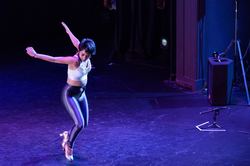 Fri, August 5 @ 6 pm & 8:30 pm ON TAP - Beantown Tapfest Faculty Showcase Presented by Julia On Tap At the BU Dance Theater, Allston $36 "Presenting tap masters and emerging artists side by side in a variety of performances from riveting solos to full company pieces." Every year, Beantown Tapfest delivers some of the best Tap classes and performances you can get, and this year is no exception. Go to the site to check out the full line up and buy your tickets ASAP! 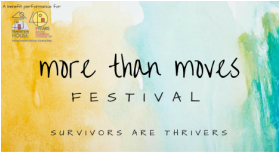 Mon, August 8 @ 7:30 pm More Than Moves Festival Presented by Paradise Lost: A Movement Collective, Transition House & Featured Artists! At Central Square Theater, Central Square, Cambridge $15 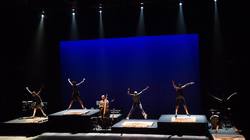 Wed, August 10 - Sat, August 13 @ 8 pm Thurs, Sat & Sun, August 11, 13 & 14 @ 2 pm ETM: Double Down Presented by Dorrance Dance and Jacob's Pillow At the Ted Shawn Theater, Jacob's Pillow $39/$59/$75 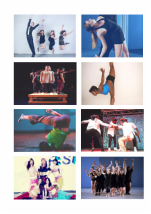 Fri & Sat, August 19 & 20 @ 8 pm Student / Faculty and Friends Showcase - 2.0 Presented by Adrienne Hawkins and the students and faculty of the Dance Complex At The Dance Complex, Central Square, Cambridge $15 advance/ $20 at the door This is a great opportunity to see some of the companies that rehearse, perform, and teach out of the Dance Complex, and get to know your dance community a little bit better! Featuring companies Impulse Dance Co., Off Beat, Freedom Dances, Present Day Dance Theatre ,Mystique Illusion Dance Theatre, and performances by Repertory Classes taught by, Brian Crabtree, Erin Washington, Jody Weber, Johara, and Adrienne Hawkins. 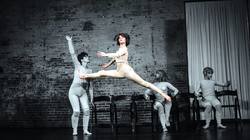 Wed, August 24 @ 6:15 pm Women Making Work Presented by the Inside/Out Performance Series At the Marcia and Seymour Simon Performance Space, Jacob's Pillow FREE! This awesome free performance features work from three women-led companies based out of New York City. Tiffany Mills Dance Company will be presenting excerpts from their work After the Feast; Nadine Bommer Dance will be showcasing their work American Cinema, which uses the film Team America as a jumping off point to explore movement through dancers and marionettes; Yin Yue Dance will be premiering a new piece featuring their signature precise movement and intricate soundscape. We are so excited to share the first interview with one of the 2016 ChoreoFest choreographers! Gracie Novikoff and Natalie Schiera are the co-directors of Nozama Dance Collective. They took a moment out of their preparations for a show in mid August to talk to Nicole about who they are and their thoughts on ChoreoFest! Interested in learning more about ChoreoFest or purchasing your tickets? Visit LuminariumDance.org!
ND: To begin a new work, we take the concept and the piece of music and ask ourselves how those two make us want to move. We improvise to the music and picture ourselves in the time and place the concept lends itself to, and we build choreography based on the improvisations. Each new piece is a new world. We think about how choreography would naturally fit in this world, and who the dancers are portraying in this world. At times the dancers are humans, and in other worlds they are not. We think about if and how the dancers would interact, and if it makes sense for the dancers to be aware of one another's existence. When all of the elements come together into a cohesive world, we have a piece we are excited about.
ND: In college, Natalie and Gracie were dancers and choreographers with Dance Theatre Group, a contemporary company directed by Micki Taylor Pinney. In choreographing new works for Dance Theatre Group, Micki along with other faculty would give constructive feedback throughout the creative process. We were encouraged to think through the aesthetics of the piece, as well as how the choreography fit and how we could push the movement to be bigger and bolder. We greatly appreciate Micki's assistance during those years, and since the creation of Nozama Dance Collective in 2013, we have asked Micki for her guidance. Natalie and Gracie were the Choreographers in Residence at Green Street Studios in January-February 2015, and during those months we asked Micki to assist us with the creation of our two solos, "Vortex" and "Nightmare". We were encouraged to take a concept and create not just one, but multiple worlds in which that concept could live. We improvised movement, and then built variations of those movements. As a result, we have successfully created four pieces based on the movement created during those residencies. We are ever in debt to Micki's expertise, and we continue to seek her guidance. ND: Whenever we are lucky enough to have a mentor assist with our work, we ask whether or not the movement that we are presenting makes sense with the concept, the music, and the world in general. We want everything to be cohesive and make sense. We don't necessarily want to direct the audience to an exact emotion or an exact instance in time, but we want to create a world that the audience can relate to that can be easily followed. We want to take the audience on a journey that they will enjoy and be excited about. We also ask our mentors, "have you seen work like this already?", because we are consistently striving to create new choreographic experiences.
N: Who are some of your favorite choreographers? If you could pick any choreographer from any time to set a piece on you, who would it be and why? ND: We are both currently obsessed with the work of Jaci Royal, the director and choreographer of Royal Flux based in Los Angeles. Her movement is raw, athletic, bold, daring, and exciting. Her larger group pieces are captivating, and the stage pictures that she creates are incredible. As we create works that portray women empowering one another, choreography like Jaci Royal's is inspiring. We would be honored to have Jaci Royal set a piece on us!! N: What other events do you have coming up? ND: We have our first full-length production, "Pushing Past Impulse" at Green Street Studios on Friday, August 19th at 8pm. Tickets are $20 for adults and $15 for students/children. We are thrilled to produce our best works since our inception! Here is the Eventbrite link for tickets, and our post in the Boston Calendar. N: Where can people learn more about you and your work? ND: Here are our Facebook page, website, and Twitter page. Check out what we are all about! |
Categories
All
Archives
April 2023
|
MONKEYHOUSE
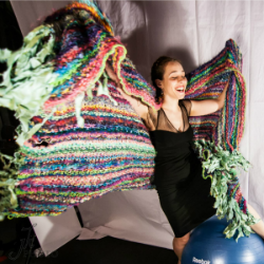
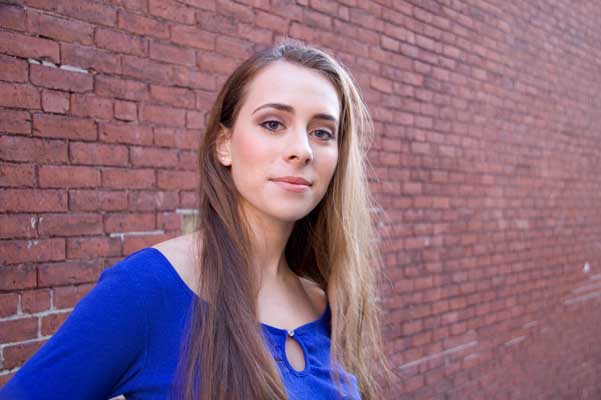
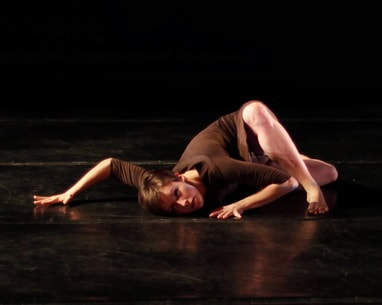
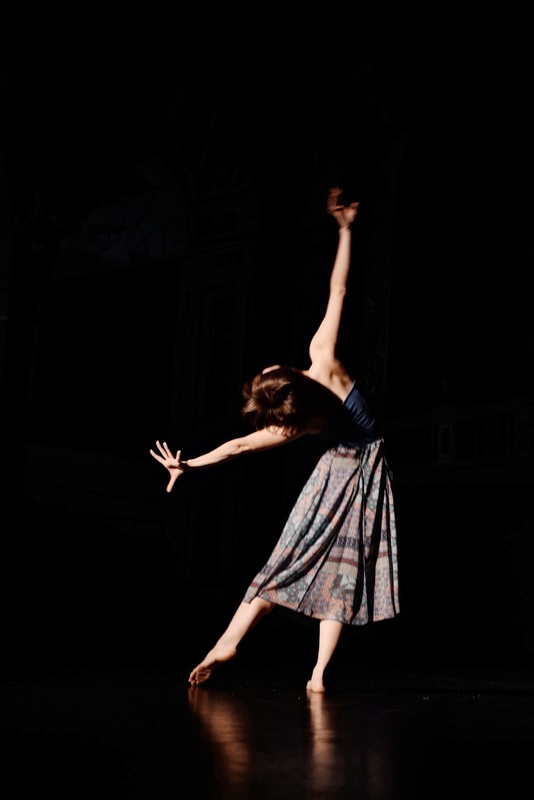
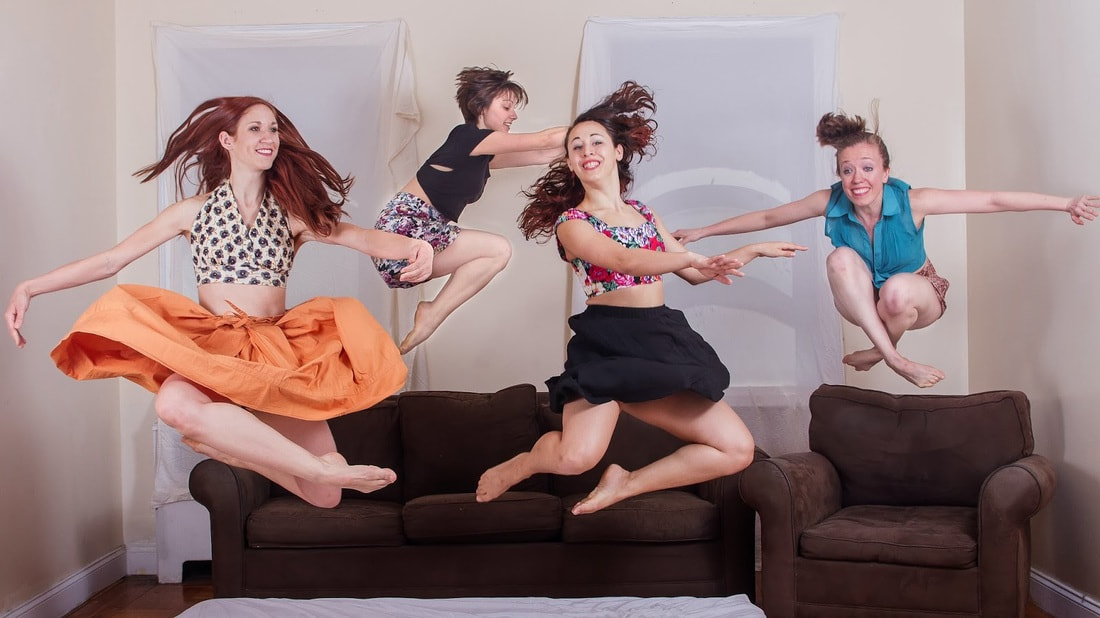
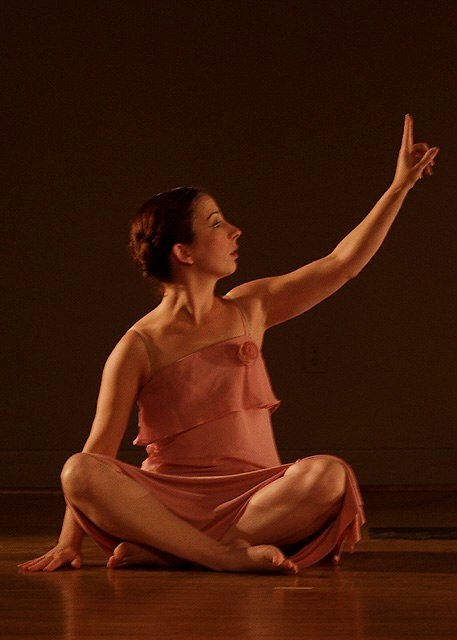
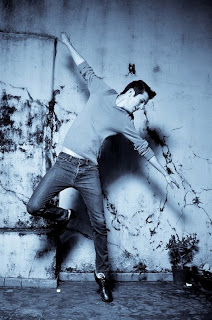
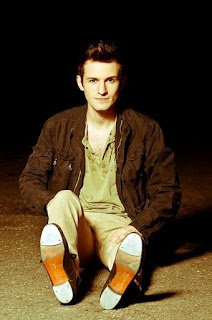
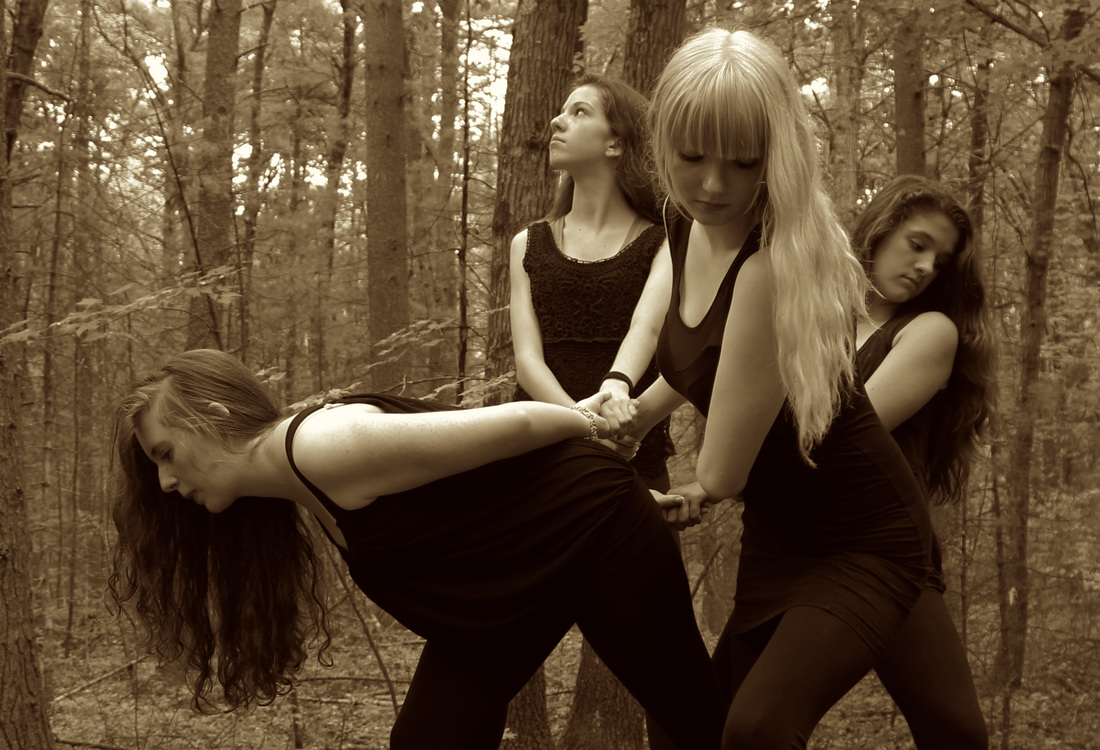
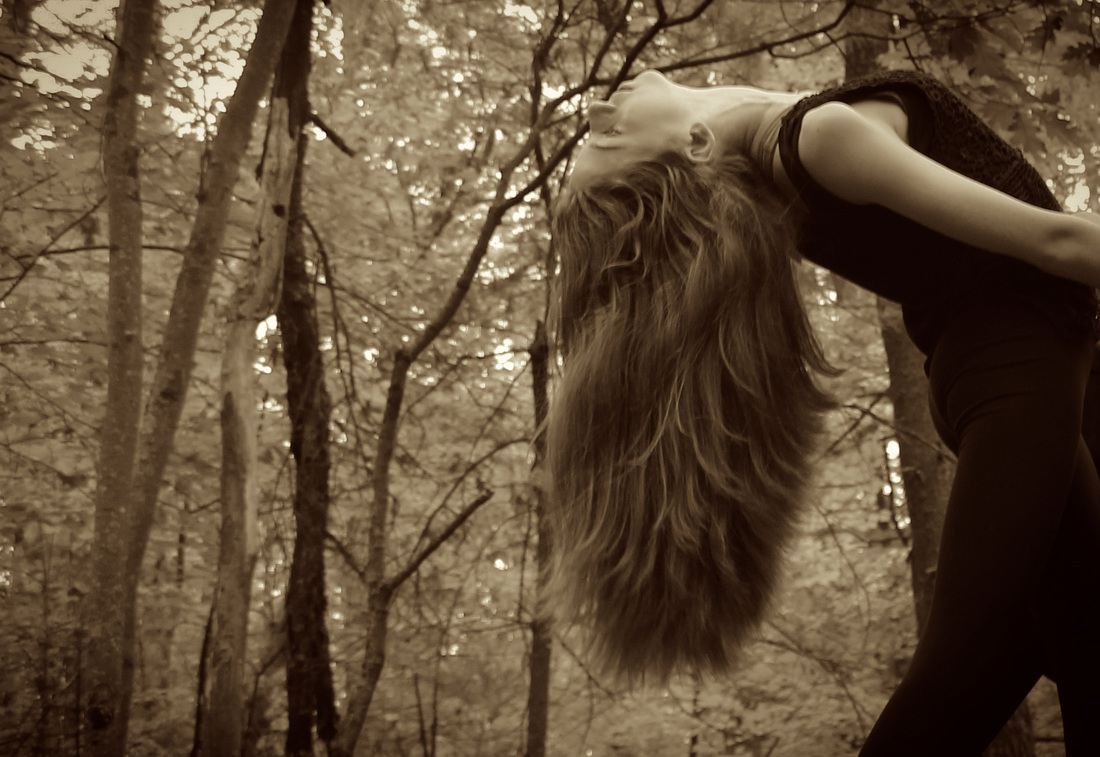
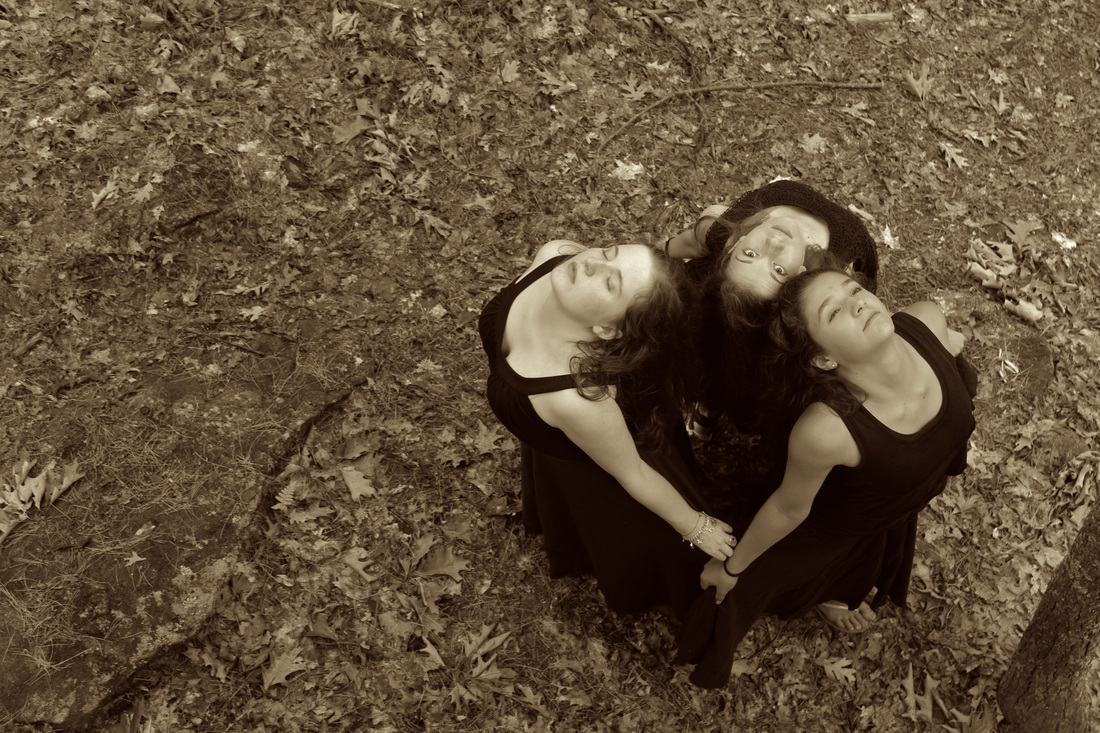
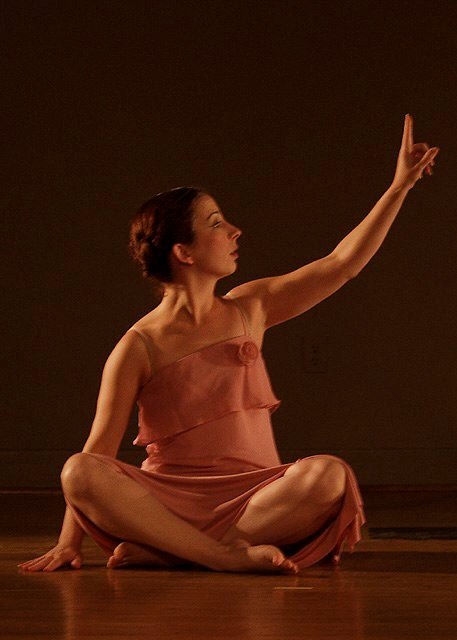
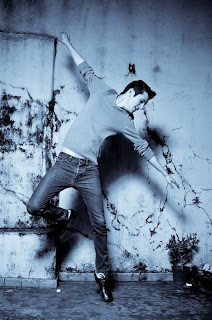
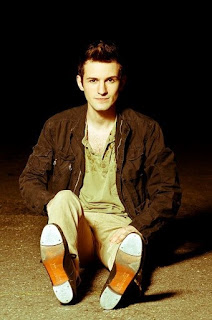
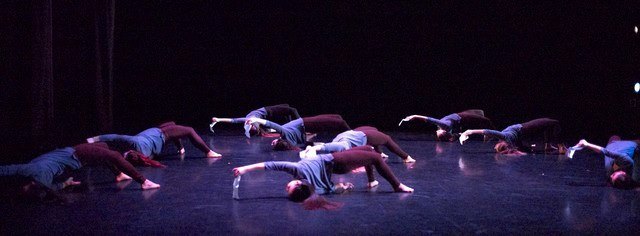
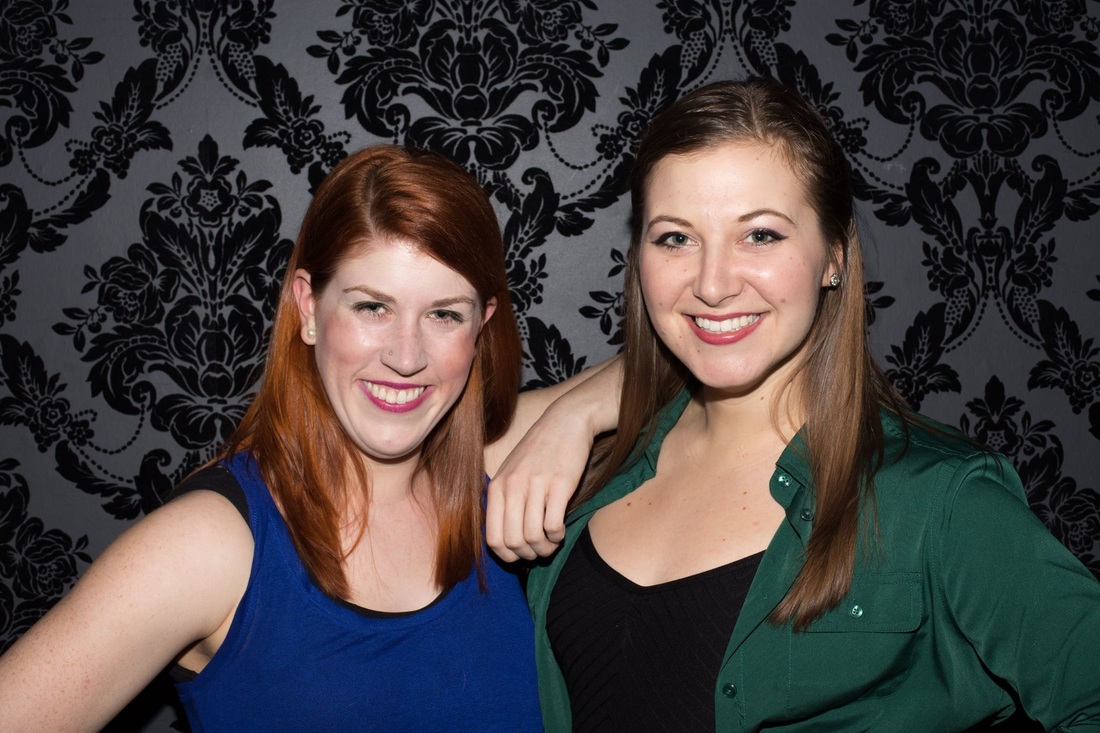
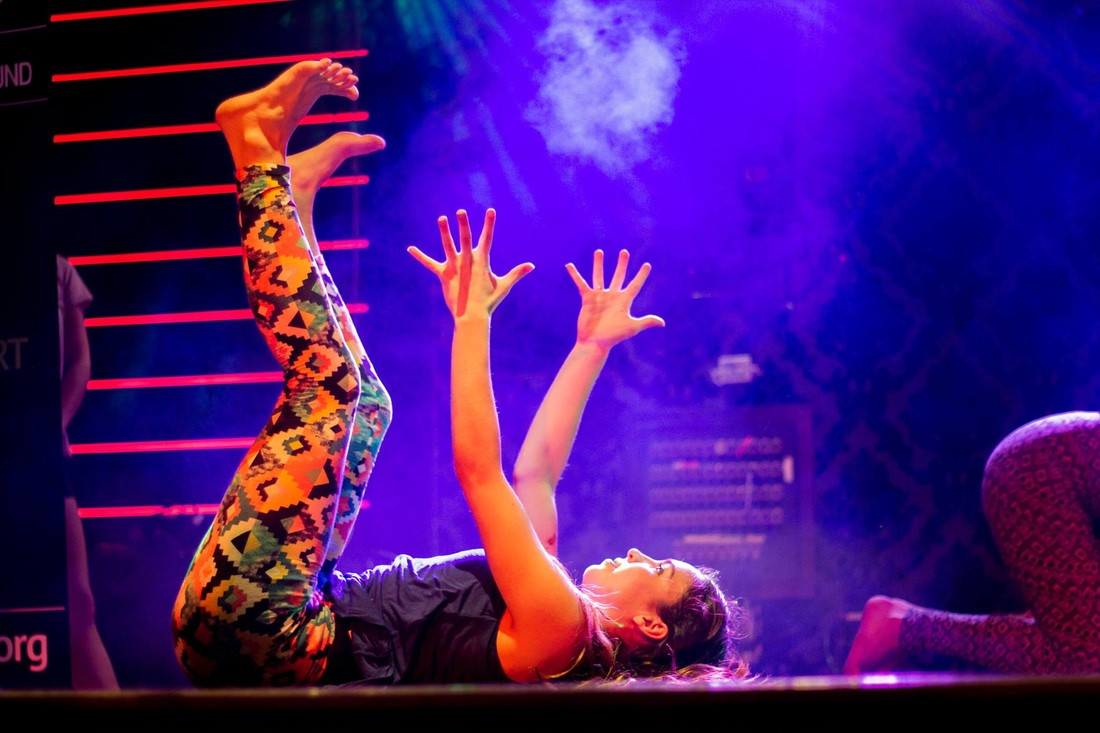
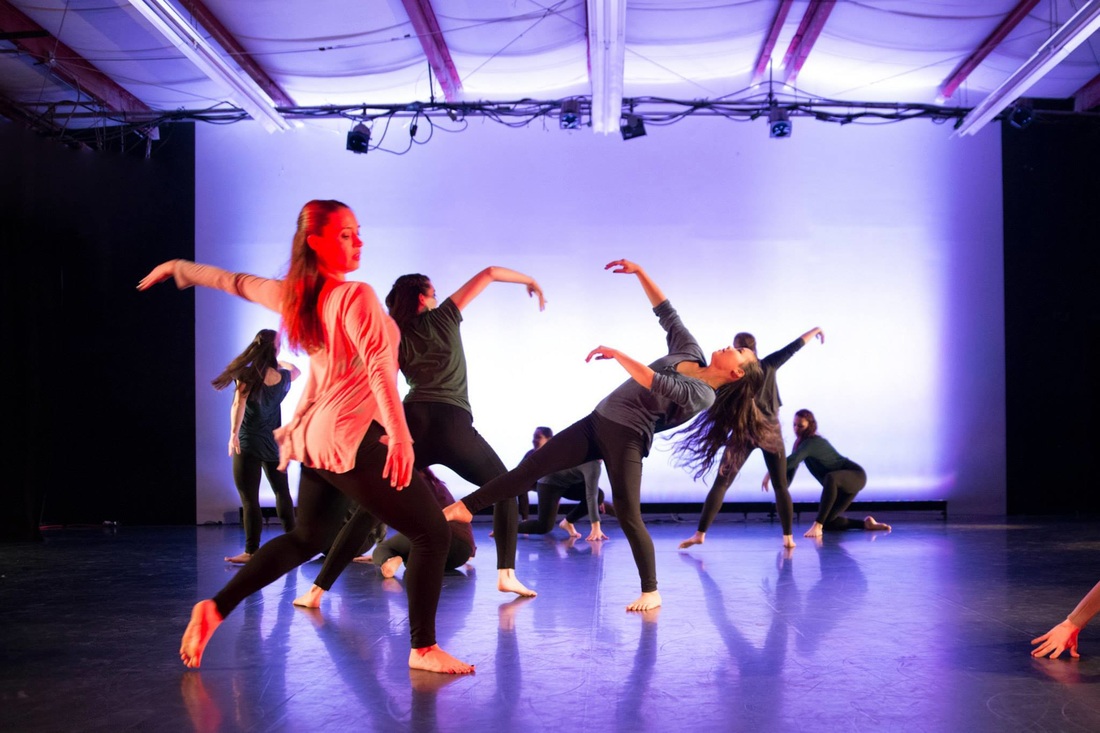
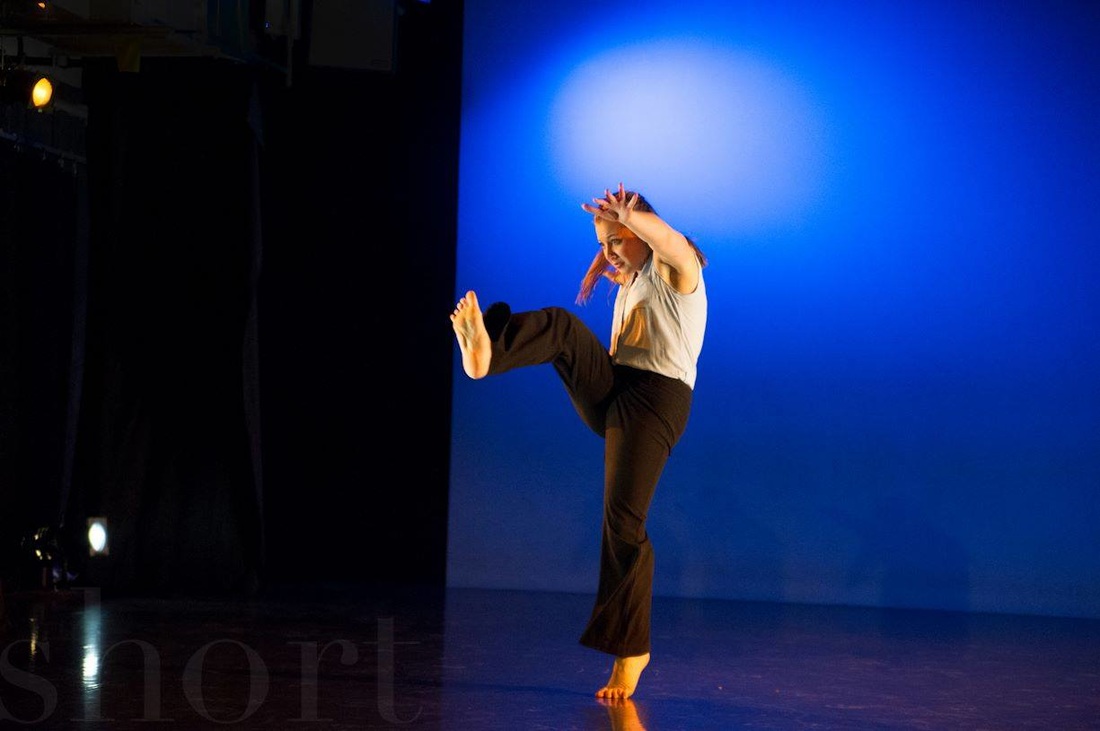
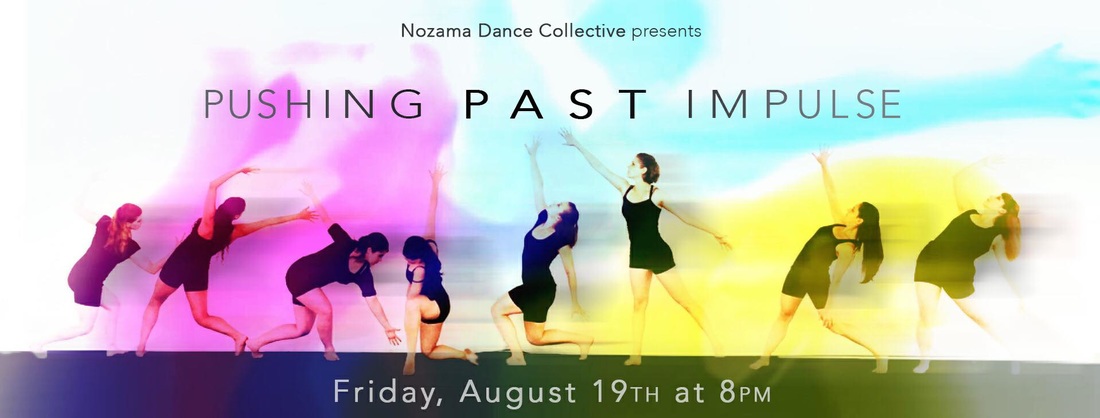
 RSS Feed
RSS Feed
